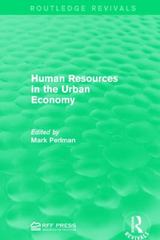i need all parts of this question answered please
1h Cnurse:EC202-_-__1r x | 5 Take-home examvisF x g Eczozs-FvTakeHar x 0 MyDasnhnam-smdt x l u zoneszoz-s-rymf x | G GetHnmeworkHelp v. x s nawtoscreensnmnn x | + 6 9 C (D Filel ,'UsersubriladerlbigbefannloadstC202-5-FY%20TakeHnme.pdf ' I o O ECZIIZ-S-FY 7 Section B 6. Answer both parts (a) and (b) of this question. (a) A monopolist selling margarine faces demand Q = 100 - 5P, where Q denotes output and P the price. Marginal cost is constant and equal to 10, and there are no xed costs. (i) [8 marks] Show that the monopolist's marginal revenue curve is given by MR = 20 0.4Q. Then calculate the output produced by the monopolist and the rm's profit. (ii) ['1' marks] An advertising agency suggests to the monopolist to run an advertising campaim that will boost demand for margarine. In particular, if the campaign goes ahead, the monopolist's demand curve will become Q = 150 SF. The campaign will cost 350, payable to the advertising agency. What will be the output produced and the prot of the monopolist from its sales of margarine if the campaign goes ahead'.J Should the monopolist choose to run the campaign? Explain. (b) A monopolist produces two goods, 1 and 2, at no cost. The firm faces two potential customers, Jose and Li. Jose is willing to pay 5 for one unit of good 1 and 9 for one unit of good 2. Li is willing to pay 8 for one unit of good 1 and 3 for one unit of good 2. Both Jose and Li want to buy at most one unit ofeach good. A customer's willingness to pay for a bundle which includes one Imit ofeach good equals the sum of the amounts the customer is willing to pay for each good separately. So, for instance, if w: is Jose's willingness to pay for good 1 and wz'l is his willingness to pay for good 2, then his willingness to pay for a bundle consisting of one unitofeachgoodis w: +w{. (i) [4 marks] Suppose that the monopolist can only sell each good separately and wants to maximise its prot. Calculate the price charged for each good and the monopolist's total prot. (ii) [6 marks] Now suppose the monopolist is allowed to sell abundle of the two goods. However, in this case the rm can no longer sell any of the two goods separately. Derive the price charged for the bundle and the monopolist's total prot. ls lose better off or worse off compared to part (i)? Is Li better off or worse off? Explain your







